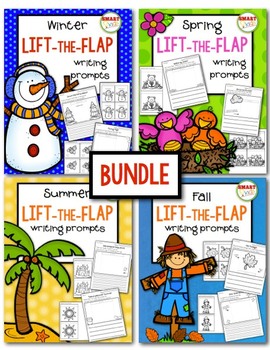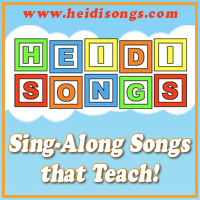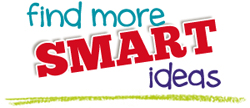 |
Here is how I did it:
 1. Letter Sounds Club (AKA: A Little Motivation, Please!)
1. Letter Sounds Club (AKA: A Little Motivation, Please!) Last year, one of my talented colleagues came up with the idea of making up a chart that the children could add their name to when they all learned their letter sounds. It is very similar to the Number Club, in which the children get to add their names once they know all of their numbers 0-30. I also sent home a note about it in hopes that the parents would want to help their children get their names up on the board. I designed it to look like an awards ribbon, and I really like the way it came out! I am including it today for you as a free download, too! And in case you were wondering, my priority is this: first I concentrate on the letter sounds, then the lower case letter names, and finally the capitals. Why? Because once they know the letter sounds, they can begin to learn to read. Also, they will see the lower case letters much more often than the capitals, so these will be more important for them to learn first. Once they know the lower case letters, the capitals will follow, especially since many of them are look-alike letters anyway. :)
2. Extra Progress Reports I sent home a progress report at the end of last week to let parents know how their children were doing. (Yes, I do realize that it was only the end of the fourth week of school!) But I figure that if I am going to get them to help their children master the alphabet by the end of the first trimester, I will have to start lighting that fire ASAP, because it is not going to be an easy task for some. I am attaching this progress report for you as a free download, just in case you would like to do the same! Even if only half of them take the information and try a little harder to help their children, it's worth the effort. Anything that the parents do is one less thing that I have to do myself, that’s for sure! Even if it just helps a little bit, it’s worth a try. I will also send home a fresh set of alphabet flash cards with some of them to practice with.
3. Extra Parent Conferences for Those That Are REALLY Struggling (AKA: Empower Those at Home to HELP!) I held an extra parent conference last week with one child’s parents who were really concerned about her slow progress in learning the letter names. At this conference, I showed the parents how I would work with the child at home, if she were my own. I sat with them and showed them three or four different ways to practice the alphabet with their child, and also gave them a Singable Songs for Letters and Sounds DVD. So basically, I sat and modeled how to teach their child the letters. Last week, the little girl knew just four or five lower case letters, but today during after school tutoring, she identified SEVENTEEN lower case letters!!!! So I think this must have really paid off! Even I was amazed at the change in her ability to identify the letters! Wow! Remember, any time you spend training parents to help children is time well spent, because they have MUCH more time to spend individually with their children than you do!
 |
| RAN Board |
5. Tricks for Learning the Alphabet Names (Try Some Mnemonics On For Size!) Once I have the children in small groups, I try to show the children the relationship that many of the letter sounds have to the letter names. For example, the sound of the M and its letter name have a definite connection, so these letters will be easier for them to learn. The “Sounds to Letters” song on the Singable Songs for Letters and Sounds CD/DVD is also useful for establishing this connection.
 |
| Singable Songs for Letters and Sounds is available on both CD and DVD. |
6. Zoo Phonics, and Home Made Zoo Phonics “Transitional” Flash Cards
 |
| This is an "Old Style" Zoo Phonics card. They have newer, updated artwork now, but since all of my supplies are in the old style of cards, I never switched over. |
 |
| This is what their new artwork looks like. |
- Example A: If the child's attention wanders, and he stops looking at the cards, then this affects learning. This could be due to simple behavior, or actual medical issues such as ADHD. Working with a child one-on-one daily usually can solve the problem, though. Also be sure to check the child's vision to make sure the child can physically see!
- If the child is doing the motions, but doesn't say the sound, then this affects learning.
- If the child says the sound, but refuses to move his or her body, then this affects learning.
- If the child cannot hear the sounds, (due to a physical disability), then of course this affects learning.
- If the child is having trouble discriminating (telling the difference) between the sounds that he hears, than this affects learning. For example, if the child confuses the beginning sound of the short E (as in "elephant") with the beginning sound of I (as in "inchworm") then this will affect learning. Each time you test the child on these letter sounds, he or she may respond with a totally different sound! It's hard to tell if the child actually learned it.
I hope that these tips are helpful to you! If you have any questions that I might be able to help you with, just send them to info@heidisongs.com. If you enjoyed this blog post, please consider signing up for our email updates! You can also follow this blog on Bloglovin', and keep in touch with me on Pinterest, Facebook, Twitter, Google+ and YouTube, too! Heidi
Wow, Heidi! That post was packed. Thank you again for these great ideas. If you appreciate Heidi as much as I do, give her a shout out in the comments section.




















Thank you so much for your super sweet comments about me, Jayne, and for posting my blog here! I can't wait to have you post on my blog!
ReplyDeleteHeidi
I always learn so much from Heidi. She truly is a wise experienced talented teacher. Thank you, Jayne, for reposting here. Reading both of your blogs helps me more than any district in service. Hope your summer is all that you wish for!
ReplyDeleteThis comment has been removed by the author.
ReplyDelete